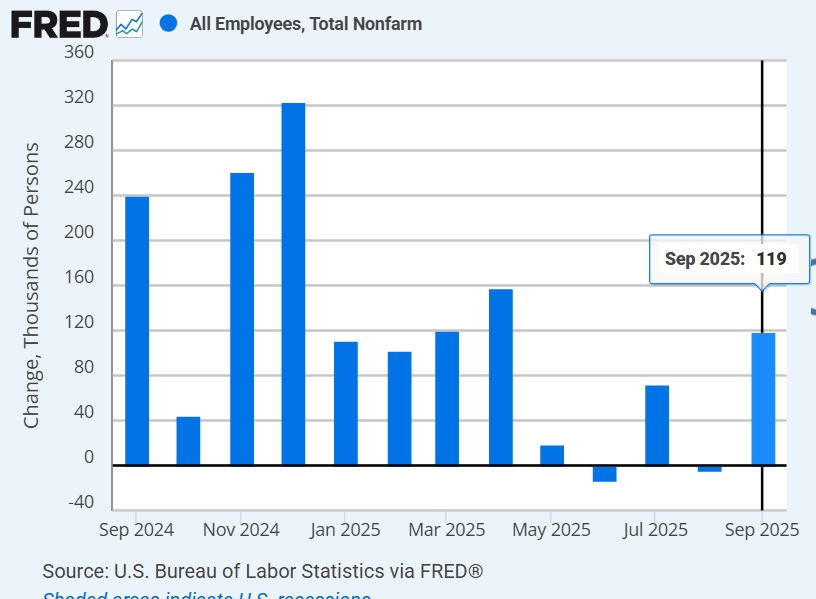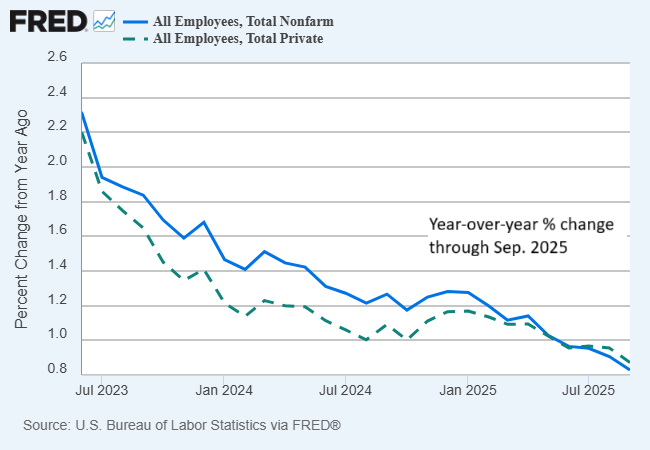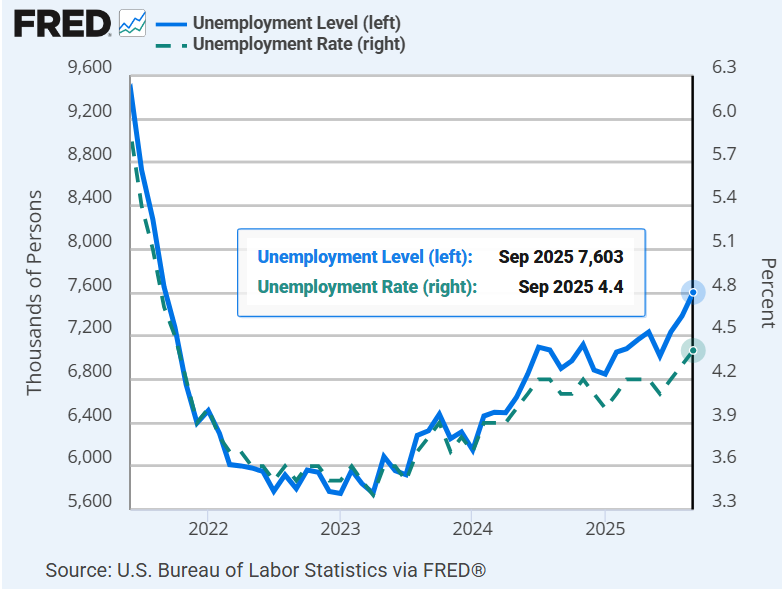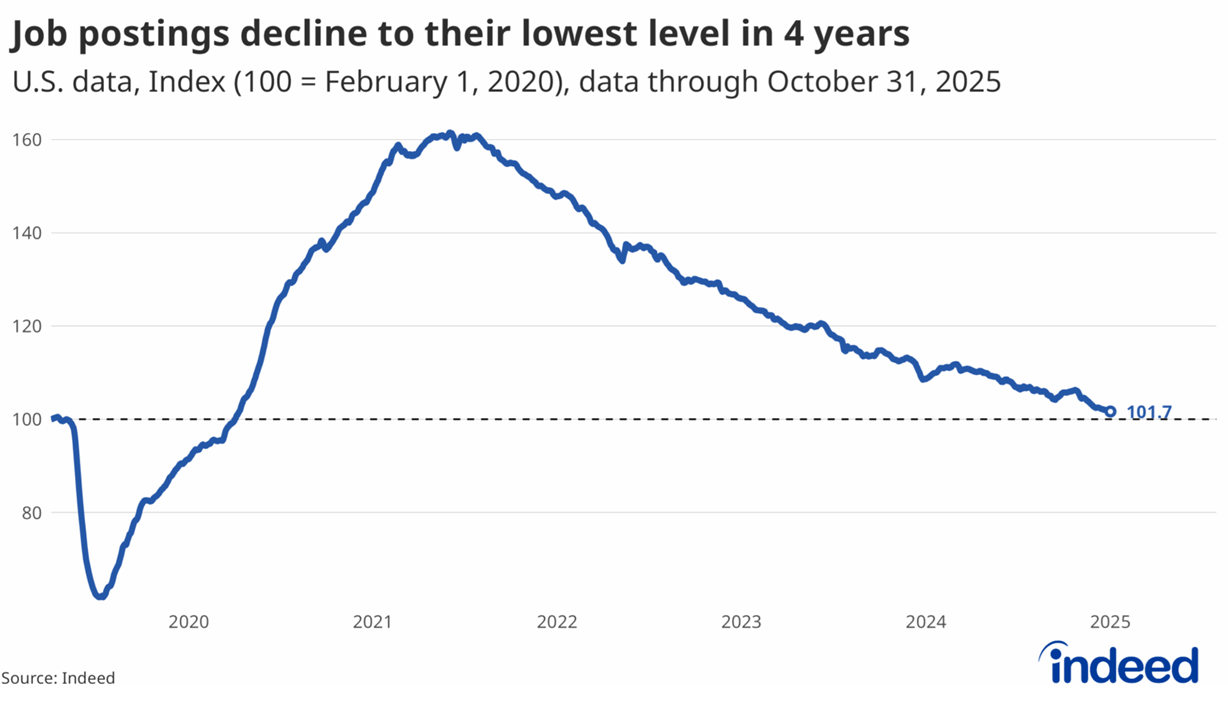The return of the government’s monthly payrolls report delivered some upbeat news yesterday. Non-farm payrolls rose more than forecast in September. The data suggests the US economy ended the third quarter with a modest degree of relative strength. But a closer look at the numbers still points to ongoing weakness, which raises questions about the economy’s strength in the months ahead.
Let’s start with the good news. rose 119,000 last month, far above the consensus forecast for a 50,000 gain. The September increase marks the strongest month for hiring since April.
The better-than-expected monthly data didn’t affect the ongoing slide in the year-over-year trend, which continues to weaken. The soft trend is likely to continue, putting the economy at risk in the months ahead.
Another warning sign is the ongoing rise in . The and the total number of unemployed workers rose again in September, reaching their highest marks in four years. Although the jobless rate is still low by historical standards – 4.4% in September – the persistent increase is worrisome.

Another problem is that September is ancient history at this point. The question is how the labor market, and the economy overall, have fared in the wake of the government shutdown. It’s too soon to make high-confidence calls, but labor market data from private sources suggest a challenging outlook for Q4.
As previously reported, estimates from and Revelio Labs indicate that payrolls contracted in October.
Headwinds appear to be building via other indicators, including Indeed.com’s measure of job postings, which fell to their lowest level in four years through last month.
“Job postings continued to decline in October, reaching their lowest level since 2021 and sitting at just 1.7% above pre-pandemic levels as of October 31,” Indeed reports. “This decline is widespread, with job postings in almost half (49%) of sectors sitting below their pre-pandemic baseline and all but four experiencing year-over-year declines.
On a positive note, new filings for unemployment benefits remain low. Considered a leading indicator for the labor market, this data still paints an upbeat picture. New filings for unemployment benefits fell by 8,000 from the previous week to 220,000 for the week ending Nov. 15, the Labor Department reports.
Looking backward, it’s likely that the report, when it’s released, will show an economy that posted a solid gain. The Atlanta Fed’s model estimates Q3 growth at a sizzling +4.2% (as of Nov. 19). If correct, the gain will mark the strongest annualized quarterly increase in two years.
The critical issue at this point is how the incoming economic data for Q4 compares. It’s debatable if a recession is brewing, but the forecast that growth will continue to slow is compelling.
By some accounts, there’s still room for debate about the near-term outlook. One of the optimists, if only in relative terms, is Stephen Stanley, chief US economist at Santander US Capital Markets. “The unemployment rate has trended higher, but for the ‘right’ reasons because labor force participation is rising even faster than the solid gains in employment,” he tells Reuters. “This is very far from the results one would expect if the labor market were spiraling downward.”

